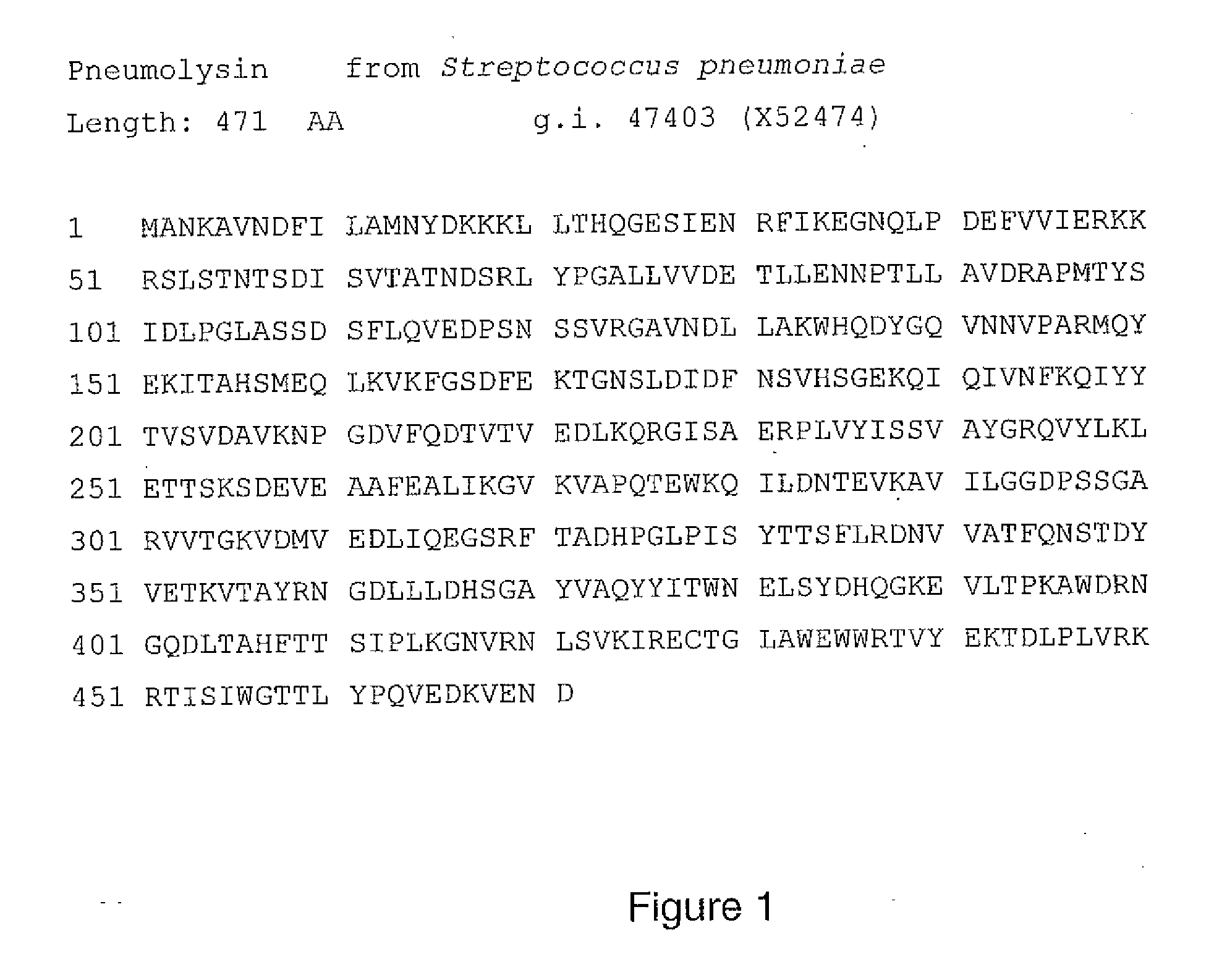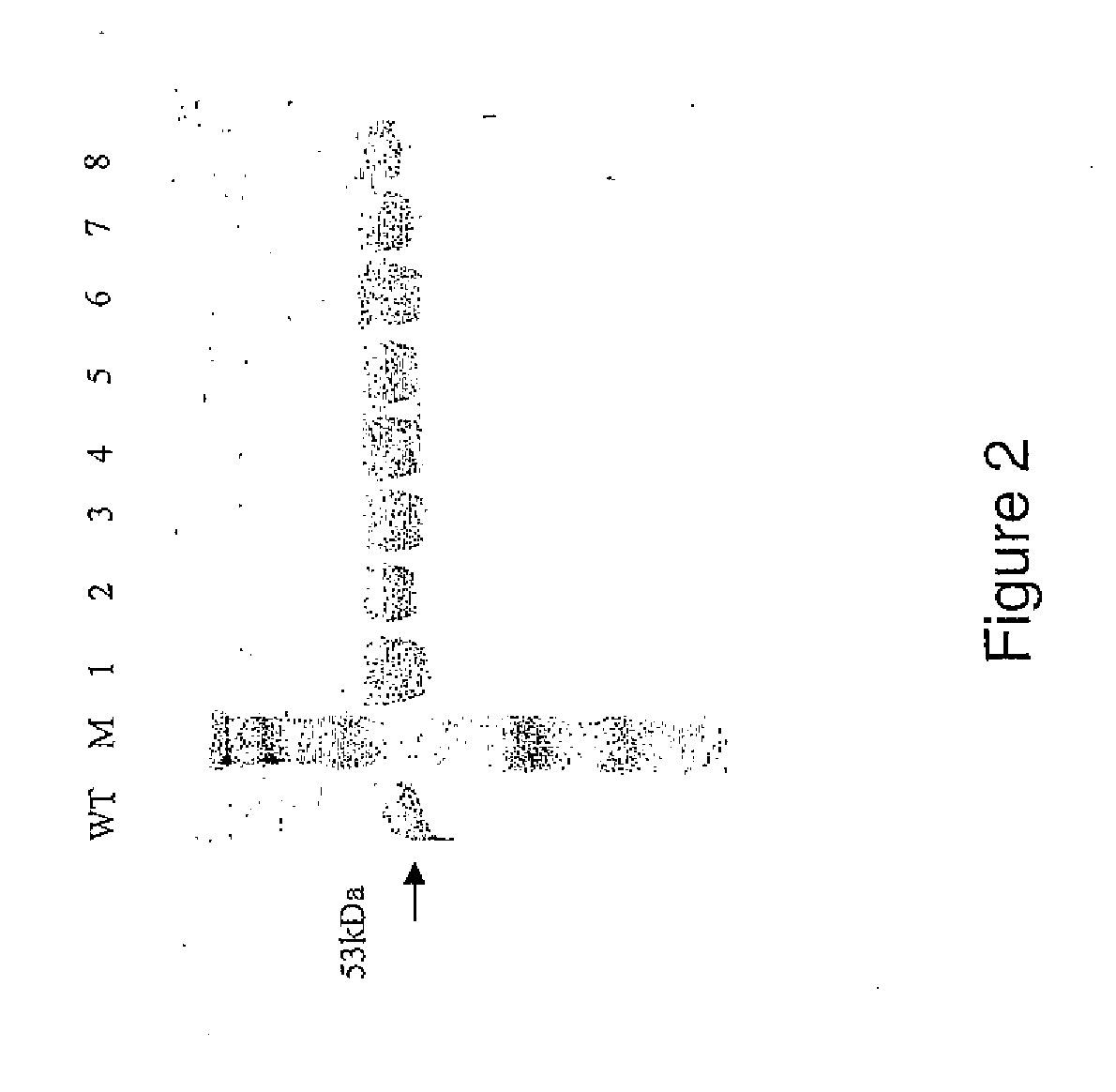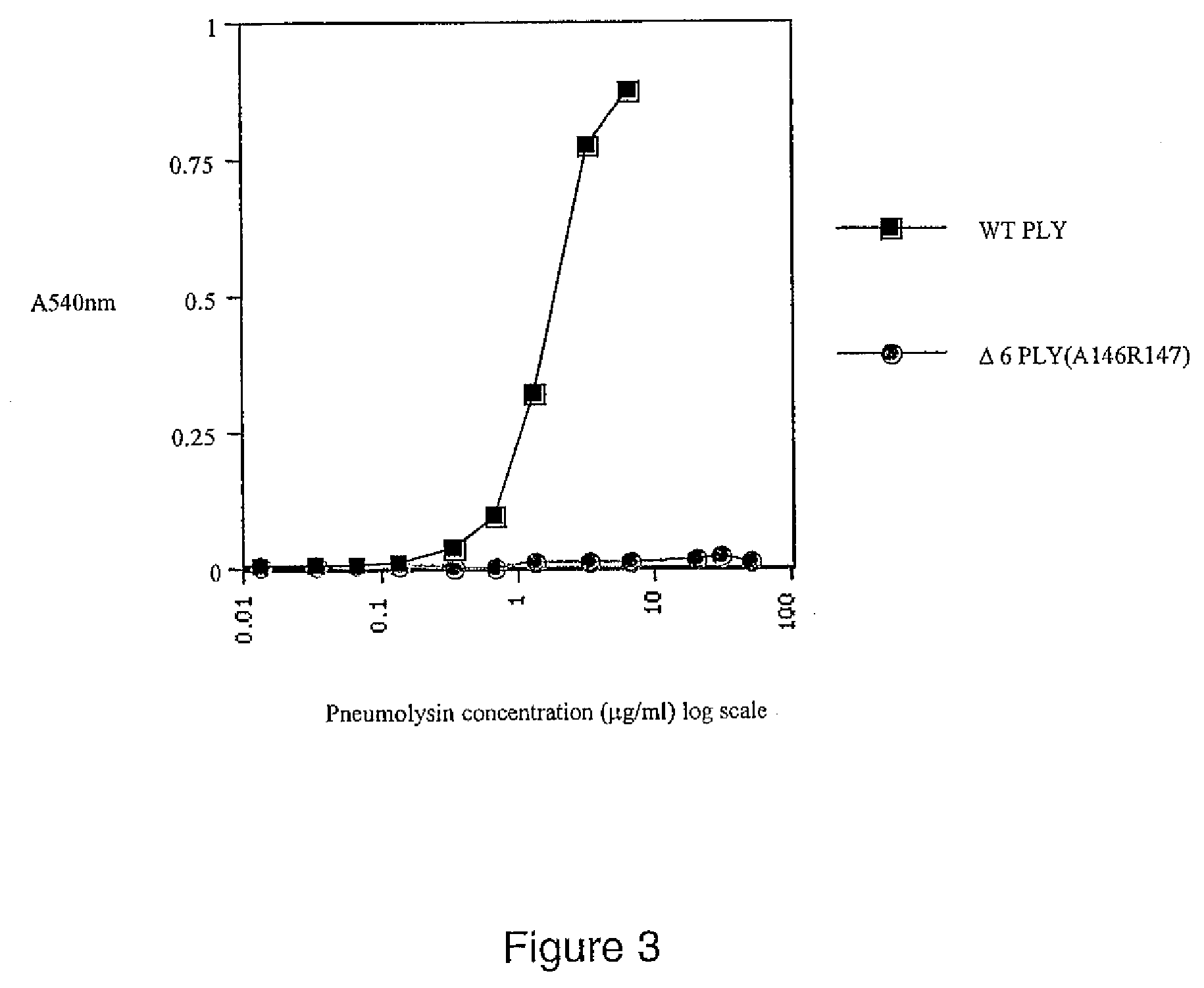Mutant Pneumolysin Proteins
a technology proteins, which is applied in the field of mutant streptococcus pneumoniae pneumolysin proteins, can solve the problems of high toxicity of native ply, difficult preparation of unconjugated immunogenic compositions, and significant impact on healthcare costs in developed countries
- Summary
- Abstract
- Description
- Claims
- Application Information
AI Technical Summary
Benefits of technology
Problems solved by technology
Method used
Image
Examples
example 1
Site-Directed Mutagenesis of Pneumolysin
[0132]Eight double amino acid deletions from wild type pneumolysin were created using the Quikchange® site directed mutagenesis kit (Stratagene). The template plasmid was the high expression vector pKK233-3 (Clontech Laboratories) in which PLY was previously inserted. Primers designed to delete the relevant amino acids (see Table 1 below) were ordered from Sigma-Genosys. The following deletions were created to span the N143 region of PLY:
W134H135Q136D137Y138G139Q140V141N142N143V144P145A146R147M148Q149Y150E151; where
[0133](Δ1) W134H135, (Δ2) Q136D137, (Δ3) Y138G139, (Δ4) Q140V141 (Δ5) V144P145, (Δ6) A146R147, (Δ7) M148Q149, (Δ8) Y150E151 (see Table 2). N142N143 was the deletion previously created (Search (2000)), where proteinase K cuts PLY into two fragments.
TABLE 1Primers used to create double amino aciddeletions within the PLY geneNucleotide sequences of primersPrimersfor site-directed mutagenesisΔ1 fwd5′-CGATTTGTTGGCTAAGCAAGATTATGGTCAGG-3′Δ...
example 2
Protein Expression and Purification
[0134]Wild type (WT) and mutant PLY was expressed in Escherichia coli and harvested as described previously (Mitchell et al, 1989). Cells were disrupted using the benchtop cell disrupter (Constant Systems Ltd) and cytoplasmic proteins obtained by centrifugation at 13,000 rpm for 30 minutes. Hydrophobic Interaction Chromatography with a phenyl ether matrix (PE20, Applied Biosystems) was used to purify PLY with the BioCAD (RTM) 700E Perfusion Chromatography Workstation (Applied Biosystems). Eluted fractions were run on SDS-PAGE and coomassie stained using standard protocol and fractions containing pure PLY were pooled.
example 3
Quantitative Haemolytic Assay
[0135]Haemolytic activity of purified protein was assessed using an assay based on that reported by Walker et al., (1987) using a 2% (vol / vol) sheep red blood cell (SRBC) (E & O laboratories) solution in 1× Phosphate Buffered Saline (PBS) (Oxoid). Pooled fractions were concentrated using minicon B15 clinical sample concentrators (Millipore). Toxin was prepared in serial dilutions in 1.5 ml 1×PBS (Oxoid). An equal volume of 2% (vol / vol) SRBC was added to each dilution and incubated at 37° C. for 30 minutes. Solutions were then centrifuged at 300 rpm for 5 minutes to pellet SRBC membranes or whole cells. Haemoglobin content of the supernatant was read at OD540nm and plotted against toxin concentration to give the degree of haemolysis in relation to toxin concentration. An OD540nm of 0.5=50% lysis.
[0136]Crude haemolytic analysis revealed that four of these mutants, deletions 5-8, were non-haemolytic. Further analysis of purified Δ6 PLY (A146R147) in a quant...
PUM
| Property | Measurement | Unit |
|---|---|---|
| concentrations | aaaaa | aaaaa |
| concentrations | aaaaa | aaaaa |
| concentrations | aaaaa | aaaaa |
Abstract
Description
Claims
Application Information
 Login to View More
Login to View More - R&D
- Intellectual Property
- Life Sciences
- Materials
- Tech Scout
- Unparalleled Data Quality
- Higher Quality Content
- 60% Fewer Hallucinations
Browse by: Latest US Patents, China's latest patents, Technical Efficacy Thesaurus, Application Domain, Technology Topic, Popular Technical Reports.
© 2025 PatSnap. All rights reserved.Legal|Privacy policy|Modern Slavery Act Transparency Statement|Sitemap|About US| Contact US: help@patsnap.com



